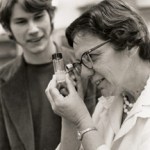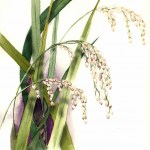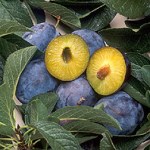immunity
If there's one thing about having a demanding day job, it's that the cranks usually have the advantage. They can almost always hit first when a news story comes out that they can spin to attack their detested science. On the other hand, it usually ensures that by the time I get home, have dinner, and settle down in front of the TV with my laptop to discusse the latest bit of science, there's some tasty crankery to deconstruct.
Oddly enough, tonight appears not to be one of those times. Heck, as of this writing, even that wretched hive of antivaccine scum and quackery, Age of Autism,, doesn…
Joe Mercola is antivaccine, through and through, and, unfortunately, his website is one of the largest repositories of antivaccine quackery on the Internet. While it's true that, unlike the antivaccine crank blog Age of Autism, Mercola doesn't limit his advocacy of quackery to just antivaccine quackery, he has recently teamed up with Barbara Loe Fisher, founder of the Orwellian-named National Vaccine Information Center (NVIC) and the grande dame of the antivaccine movement. Indeed, Mike Adams has got nothing on Joe Mercola when Joe decides he wants to go on an antivaccine tear, which he did…
Applause for Plant Physiologist Helen Stafford who left the Reed College Biology Department $1M. As a woman scientist in the 1950s, Stafford was ineligible for many jobs. Reed College, not deterred by her sex, offered her a position. She went on to establish a successful career and inspired many young scientists. Here is a short story of how she influenced my career.
The windowless room, dank an dark, was not an obvious place for inspiration. I took notes, wondering if I would be able to glean anything meaningful from Professor Helen Stafford's (1922-2011) meandering lecture. I was skeptical…
Applause for Plant Physiologist Helen Stafford who bequeathed an astonishing $8M to Reed College in her will. As a woman scientist in the 1950s, Stafford was ineligible for many jobs. Reed College, not deterred by her sex, offered her a position. She went on to establish a successful career and inspired many young scientists. Here is a short story of how she influenced my career.
The windowless room, dank an dark, was not an obvious place for inspiration. I took notes, wondering if I would be able to glean anything meaningful from Professor Helen Stafford's (1922-2011) meandering lecture. I…
On Tomorrow's Table, Pamela Ronald shares a breakthrough in the study of bacterial communication. Although bacteria have been known to use a limited chemical vocabulary, for the first time they have been observed to use a protein as a signalling mechanism. Ronald writes, "Ax21 is a small protein. It is made inside the bacterial cell, processed to generate a shorter signal and then secreted outside the bacterium." In the species studied, perception of Ax21 caused nearly 500 genes—ten percent of the bacterium's genome—to change expression. Thus galvanized, individual bacteria assemble into…
On We Beasties, Kevin Bonham tells us all his thoughts on GoD—the Generation of Diversity that enables B-cells "to make antibodies that recognize almost any chemical structure that has ever existed or will ever exist." By recombining three essential pieces of an antibody (with 100, 30, and 6 variants respectively), using enzymes to slice up DNA and stitch it back together, and owing to a little extra variation from our parents and a dash of random nucleotides, B-cells can fabricate about 10 billion different antibodies to intercept viruses, bacteria, and other intruders. On ERV, Abbie…
The last common ancestor of plants and animals may have lived 1 billion years ago. Plants and animals have occasionally exchanged genes, but for the most part, have countered selective pressures independently. Microbes (bacteria, eukaryotes, and viruses) were omnipresent threats, influencing the direction of multi-cellular evolution. Receptors that detect molecular signatures of infectious organisms mediate awareness of non-self, and are integral to host defense in plants and animals alike. The discoveries leading to identification of these receptors and their ligands followed a similar…
Tonight's dessert is plum cake:
Tante Lissy's Flaumen Kuchen (Plum Cake)
1 c Butter
1 c Sugar
1 Egg
2 tsp Almond extract (or vanilla)
1 tsp Salt
1 c White fl our
1 c Barley
10 Plums, pitted and cut in half
2 Tbsp warmed apricot jam
1. Beat together butter and sugar. Add in egg, almond or vanilla extract,
and salt.
2. Mix in fl our and barley to form a dough.
3. Pat 2/3 of the dough into an ï¸-inch pan with removable rim. Arrange plums,
cut side down, in pan.
4. Lattice rest of dough on top; drizzle with apricot jam.
5. Bake at 350°F for 45 minutes.
I saved some Santa Rosa plums last summer…
ERV familiarizes us with the different "layers" of the immune system, including intrinsic, innate, and adaptive immunity. The last layer makes specific antibodies to recognize pathogens, but in the case of HIV, capable antibodies aren't enough to stave off the progression of disease. ERV writes, "HIV-1 evolves to escape these antibodies...and your body can't catch up." The high mutability of HIV-1 makes for a very plastic envelope, meaning the virus continually shifts shape and evades the watchful eye of the immune system. In another post, ERV explains that antibodies make diseases like…


